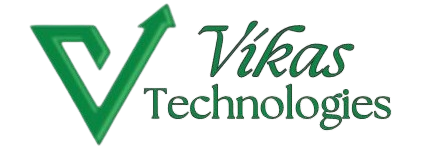What is Private Label
Introduction
Private labeling is a popular and profitable business model, especially in the world of eCommerce. With platforms like Amazon, Flipkart, and Shopify making it easier than ever to sell products online, many entrepreneurs are opting for private label products to build their own brands without the need for manufacturing expertise.
This comprehensive guide will explain what private labeling is, how it works, its benefits and challenges, and how you can start your own private label business successfully in 2025.
What is Private Label?
Private label refers to products manufactured by one company but sold under another company’s brand name. The retailer (you) chooses the product, adds your branding and packaging, and sells it as your own.
Examples of Private Label Products:
Grocery store brands (e.g., Walmart’s Great Value)
Cosmetics with custom branding
Fitness equipment branded with your logo
Supplements or health products sold under your brand
Kitchen tools with personalized packaging
How Private Labeling Works
Step-by-Step Process:
1. Product Research
Find trending or high-demand products.
Analyze competition and customer reviews.
2. Find a Supplier/Manufacturer
Use platforms like Alibaba, IndiaMart, or GlobalSources.
Look for suppliers who offer private labeling options.
3. Create Your Brand
Choose a brand name.
Design a logo and packaging.
Register your trademark (optional but recommended).
4. Customize the Product
Add your logo on the product.
Create custom packaging and inserts.
5. Place Your Order
Negotiate pricing and MOQ (minimum order quantity).
Ask for samples before bulk purchase.
6. Shipping & Logistics
Choose between air or sea shipping.
Consider using a freight forwarder or Amazon FBA.
7. List and Market Your Product
Create an optimized product listing on Amazon, Shopify, etc.
Run ads and promotions.
8. Manage Sales & Customer Support
Track inventory and reviews.
Provide excellent customer service.
Benefits of Private Labeling
✅ Full Brand Control
You own the brand and control packaging, pricing, and marketing.
✅ Higher Profit Margins
Branding allows for premium pricing.
✅ Competitive Advantage
Differentiated products create customer loyalty.
✅ Build a Sellable Asset
A successful private label brand can be sold for a high value.
✅ Easy Scalability
Once the system is set, scaling becomes easier with more products.
Challenges of Private Labeling
❌ Upfront Investment
Requires capital for inventory, branding, and advertising.
❌ Quality Control Issues
You rely on suppliers for consistent product quality.
❌ Longer Lead Times
Manufacturing and shipping can take weeks.
❌ Intense Competition
Popular niches may have saturated markets.
❌ Brand Building Takes Time
Establishing a trusted brand requires patience and effort.
How to Start a Private Label Business in 2025
1. Choose the Right Niche
Solve a real problem.
Look for low competition and high demand.
2. Conduct Market Research
Analyze competitors.
Identify gaps in the market.
3. Validate Your Idea
Use tools like Google Trends, Amazon Best Sellers, and Helium 10.
4. Design a Brand Identity
Name, logo, color scheme, brand story.
5. Find a Reliable Manufacturer
Order samples.
Check communication, quality, and reliability.
6. Fulfillment Strategy
Use Amazon FBA, third-party logistics (3PL), or self-fulfillment.
7. Launch Your Product
Create a launch strategy.
Use influencer marketing, ads, and SEO.
8. Monitor and Optimize
Track sales, reviews, and customer feedback.
Improve based on data.
Tools to Help With Private Labeling
Product Research Tools
Helium 10
Jungle Scout
AMZScout
Branding Tools
Canva (design)
Fiverr (freelancers)
Looka (logo creator)
Marketplace Platforms
Amazon
Flipkart
Shopify
Etsy
Marketing Tools
Google Ads
Facebook/Instagram Ads
Email marketing (MailerLite, Klaviyo)
Logistics Tools
ShipBob
Freightos
Amazon FBA Calculator
Conclusion
Private labeling is one of the most effective ways to build a sustainable and profitable eCommerce business in 2025. With full control over your branding, pricing, and marketing strategy, you can create a unique identity in a crowded market.
Final Tips:
Start small but think big.
Always focus on quality and customer service.
Use data to drive decisions.
Build a long-term brand, not just a product.
By following the right strategies and avoiding common pitfalls, private labeling can be your pathway to eCommerce success. Whether you’re starting a side hustle or aiming to build a million-rupee brand, private labeling is worth exploring!
